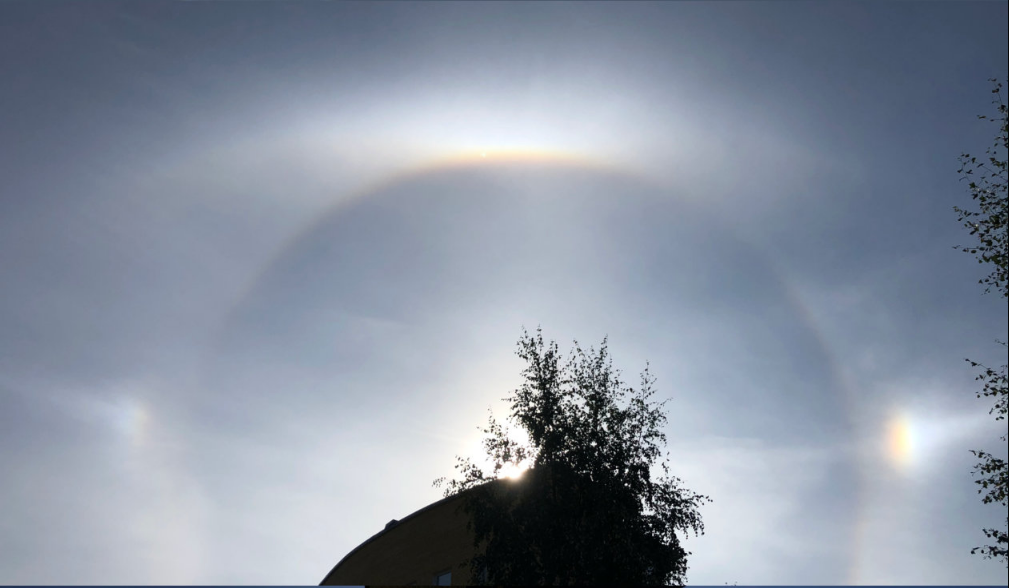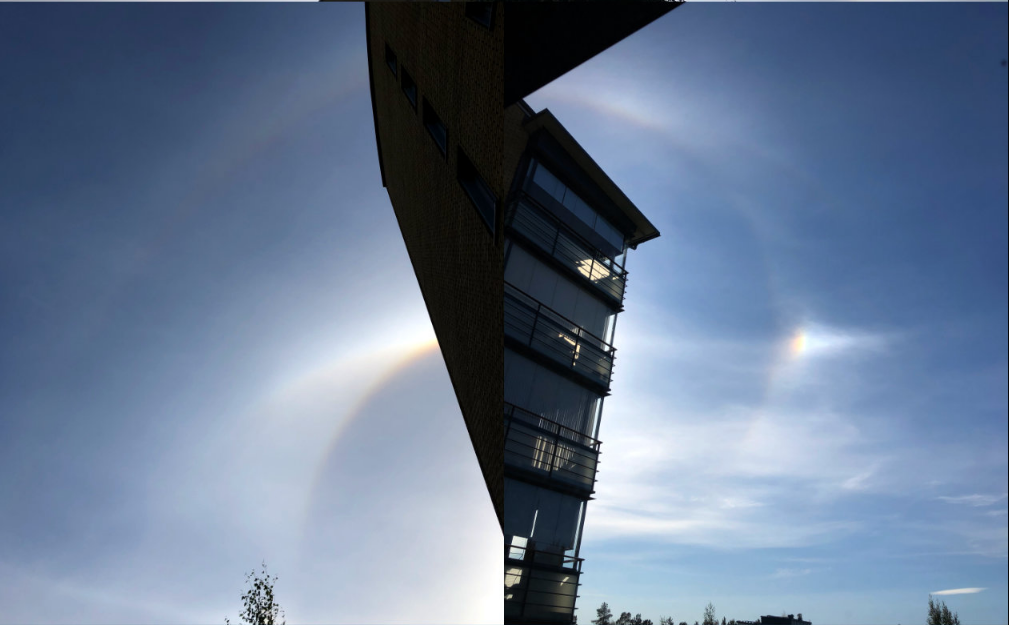Middle Lowitz Arc, Sweden
Exploring the Enigma of the Middle Lowitz Arc in Sweden
The atmospheric phenomenon known as the Middle Lowitz Arc has long captivated scientists and sky enthusiasts alike. While the occurrence of the 22-degree halo and sundogs is relatively common, the middle arc is a rare sight that continues to puzzle researchers. In this article, we delve deeper into the mystery of the Middle Lowitz Arc, focusing on a particular sighting in Sweden.
Andreas Livbom, a keen observer of atmospheric optics, captured a halo display in Luleå, Northern Sweden, that revealed a faint hint of a halo arc just outside the prominent 22-degree halo and below the sundog. Upon closer examination, it was confirmed that Livbom had indeed witnessed a middle Lowitz arc, a sighting that adds to the limited collection of documented occurrences.
One intriguing aspect of Livbom's sighting is the absence of the upper and lower Lowitz arcs typically branching from the sundog. These arcs, which are usually more pronounced, were conspicuously missing. This absence poses an intriguing question: why were they absent in this particular display?
To unravel this enigma, we must first understand the nature of Lowitz arcs. These arcs are formed by light rays passing through hexagonal prisms and can originate from three possible ray paths. The rotational axis of the prism plays a crucial role, intersecting two side face junctions. The crystals responsible for Lowitz arcs can be either plate-shaped or "rocking" Parry oriented columns.
One plausible explanation for the absence of the upper and lower arcs in Livbom's display lies in the unique properties of the crystals present in the atmosphere during that particular event. It is hypothesized that these crystals had small or non-existent top and bottom side faces relative to the Lowitz axis. In extreme cases, these crystals take on a rhomboidal shape. Such crystal variants are not uncommon in nature, as plate crystals are rarely regular hexagons. The presence of these unusual crystals would impede or even eliminate the formation of the upper and lower arc rays.
The theory of crystals with altered side face properties finds support in a similar atmospheric display observed in Vaala, Finland, in 1994. The crystals present during that event exhibited similar characteristics, explaining the absence of the upper and lower arcs. This correlation strengthens the notion that crystal morphology plays a significant role in the formation of Lowitz arcs.
To further investigate the plausibility of this hypothesis, researchers employed HaloSim ray tracing simulations. These simulations utilized the crystals with modified side face properties, and the results aligned with Livbom's observations. The only Lowitz arc visible in the simulation was the middle arc, perfectly matching the arc captured in Livbom's images.
In conclusion, the Middle Lowitz Arc remains a captivating atmospheric phenomenon that continues to baffle scientists. The absence of the upper and lower Lowitz arcs in certain displays can be attributed to crystals with altered side face properties. These crystal variants hinder or eliminate the formation of the corresponding arc rays. While rare, sightings of the middle arc, such as Andreas Livbom's observation in Sweden, contribute valuable insights into the intricate world of atmospheric optics. As researchers delve deeper into this enigma, we may uncover further clues to unravel the mysteries of this captivating natural phenomenon.

Andreas Livbom saw this halo display at Luleå, Northern Sweden. More of his pictures are below.
The 'straight from the 'phone' image at left has a hint of a halo arc just outside the bright 22 degree halo and below the sundog. Could it be a rare middle Lowitz arc? Yes!
It's clear in the colour subtraction enhancement at right. The arc shows up too on other pictures taken minutes apart.
The puzzle is that there are no upper and lower Lowitz arcs branching from the sundog - these are usually far more prominent. Why are they absent?

Lowitz famously drew a lower Lowitz arc in a St Petersburg halo display in 1790. Their very existence was thereafter controversial. There were no unequivocal published photographs until just thirteen years ago. The arcs remain rare sightings, the 'middle' arc particularly so.
There are three 22° Lowitz arcs from three possible ray paths through hexagonal prisms - shown at left. The prism's rotational axis is peculiar. It passes across the prism and intersects two side face junctions. Lowitz crystals can be plates or 'rocking' Parry oriented columns.
How to explain the absence of the upper and lower arcs in Andreas' display?
One way is to posit crystals with small or non-existent top and bottom side faces relative to the Lowitz axis. One is shown at far left. In extremis the crystal becomes rhomboidal. These
variants are physically permitted and in nature plate crystals are rarely regular hexagons. Do this and the upper and lower arc rays are then seriously hindered or even eliminated. These
crystals explained the Vaala, Finland display of 1994.
The HaloSim ray tracing at left used the crystals and the only Lowitz arc visible is the middle one. Its position matches the arc in Andreas' images.


Note: this article has been automatically converted from the old site and may not appear as intended. You can find the original article here.
Reference Atmospheric Optics
If you use any of the definitions, information, or data presented on Atmospheric Optics, please copy the link or reference below to properly credit us as the reference source. Thank you!
-
<a href="https://atoptics.co.uk/blog/middle-lowitz-arc-sweden/">Middle Lowitz Arc, Sweden</a>
-
"Middle Lowitz Arc, Sweden". Atmospheric Optics. Accessed on November 26, 2024. https://atoptics.co.uk/blog/middle-lowitz-arc-sweden/.
-
"Middle Lowitz Arc, Sweden". Atmospheric Optics, https://atoptics.co.uk/blog/middle-lowitz-arc-sweden/. Accessed 26 November, 2024
-
Middle Lowitz Arc, Sweden. Atmospheric Optics. Retrieved from https://atoptics.co.uk/blog/middle-lowitz-arc-sweden/.